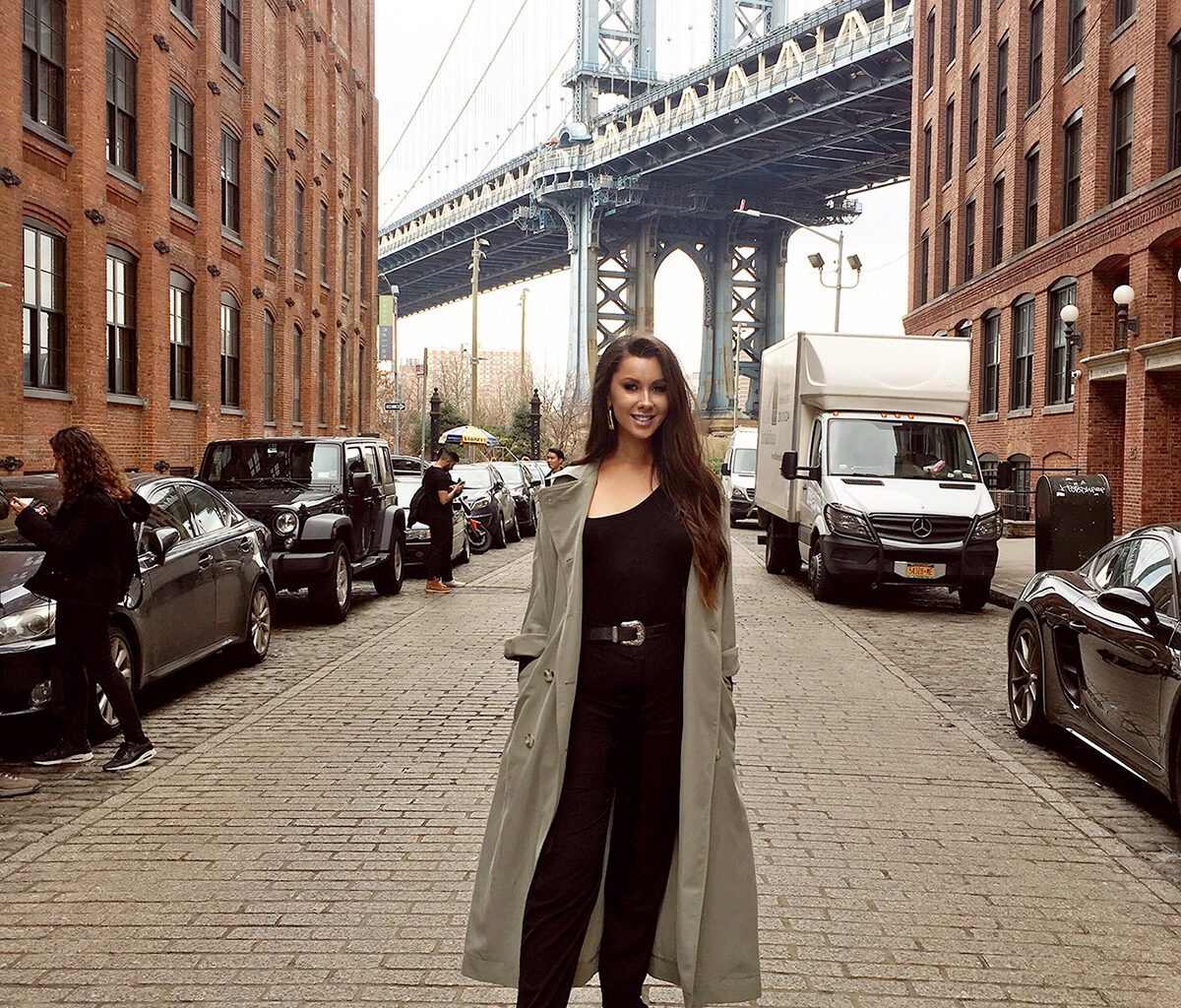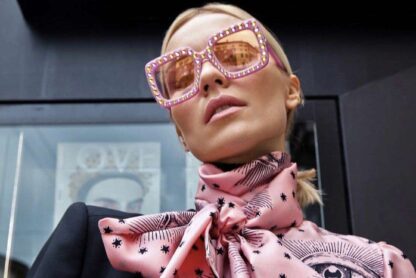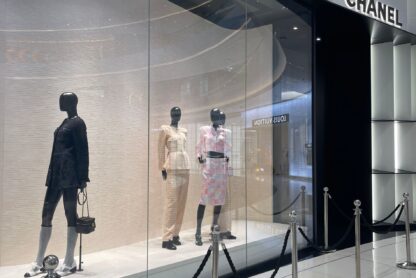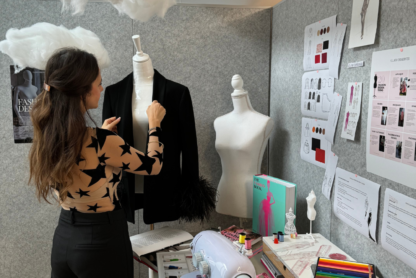Samantha McEwan is a british Merchandiser for the label Mulberry England. In this interview she told us a bit more on what’s like working as a Merchandiser, the skills required and the tasks involved.
- Thanks for being here with us today Samantha. May you introduce yourself to the Glam Observer Community?
Hi! I’m usually known as Sammy, and I’m an Assistant Merchandiser for UK’s luxury leather company Mulberry (known for classic handbags such as the Alexa and Bayswater). I’ve been living and working in London for around 6 years now.
2. When and why did you decide to enter the fashion industry?
I studied Law at University, and by the time I reached my dissertation I knew it wasn’t what I wanted to pursue professionally. I had always enjoyed studying it but my ambition didn’t match my peers’, so I knew I could never be as competitive in such a dog-eat-dog industry. I had a bit of a hiatus over the Summer after graduation where I took a full-time job in a Topshop in my home town. While I loved the clothes, visually merchandising the store and the styling the mannequins, I wasn’t quite so keen on the public-facing side of it! I researched what opportunities there were in the brand at Head Office level, and when I read the job description of a Merchandiser I knew that it was for me. It means I get to utilise the analytical skills I picked up in my legal studies, but also exercise the passion I have for all things fashion!
3.Can you give us a definition of the profession ‘Merchandiser
To sum it up in one (very simple) sentence, the essence of merchandising is ensuring you have the right product, in the right quantity, in the right place and at the right time. What that effectively means is that you manage the balance between stocking enough of the right product to potentialise and maximise sales, whilst minimising any risks/poor sellers and being overstocked in the wrong product.
As an assistant merchandiser I assist my line manager in all aspects of the merchandising function, including forecasting stocks and sales, managing both sales and buy budgets for the season, and communicating data and strategy to both management and cross functional teams.
4. What competencies should a Merchandiser own?
You should be analytical, and able to identify risks and opportunities in sales patterns; proficient Excel skills are also essential as you spend a lot of your time working in spreadsheets! Good communication is key as you are often in correspondence with a lot of different teams at any one time – ie Finance, Visual Merchandising, Area managers, Marketing, Planning, Management, etc. Merchandising also requires team work so it helps to have an outgoing personality!
5.How do merchandisers put the guidelines for the design team together?
In Mulberry we run reporting at the end of every season called “Seasonal Autopsy” and use this to run through with the design team what has worked and what hasn’t in the recent season. They can then use this as a barometer in designing the next season, bearing in mind what we have seen demand for.
We also run regular “comp shops” to keep an eye on what our competitors are doing well, and if there is anything we can do to improve and remain at the forefront of the competition.
6.In how far do you have influence on the final product designs and changes in production?
We have influence in the working stages as already mentioned. Each season we are presented with the new collection before we set to work on the Buy and plugging the numbers for how much stock we’ll need. Once we have reviewed this there is an opportunity to request any changes we think would be beneficial, or we can drop silhouettes we feel won’t work for our customer. As we are responsible for deciding which stores stock which styles, we have quite a lot of flexibility in that regard; however, it’s important that we maintain the essence of the collection as intended by the design team. Sometimes it is not about what will be the most commercial and will sell the most volume, but the vision of our Creative Director, Johnny Coca.
At Mulberry we also have an Artisan studio to run limited edition styles as exclusives for certain stores or markets, for openings or events.
7. You started working as merchandising assistant for Topshop, a more commercial brand. In how far did the ‘merchandising mission’ and intentions differ from Mulberry?
Although the fundamental practise of Merchandising will always remain the same, the two companies are very different. Topshop is much more about fast fashion, turning on fast cover and selling out of things quickly before the next style drops. It’s much more reactive to “of the minute” trends. Mulberry is much more long term, both in product lead times and generally stocking iconic styles. We are much more focussed on clienteling and the in-store experience for our customers. There is a lot more investment from a client perspective in a £1,000+ handbag than a £45 dress, for example, and clients expect a much different shopping experience because of this.
8. Do you think that one should attend a fashion school to become a merchandiser?
I met a lot of people in my time at Topshop that had come from LCF and FRA, but I don’t think it’s essential. As long as you have an interest in fashion, an awareness of what’s out there in the industry at any one time and a good eye for commercial opportunities it’s easy enough to pick up!
9. What does a typical work day look like for you?
One of the things I like best about Merchandising is there is no “typical day” as such. Aside from some reports that are run daily (to monitor sales performance), being reactive to trade and driving growth means that anything can happen on any given day. It definitely teaches you to be adaptable and deal well with pressure and tight deadlines!
10. What advice would you have liked to be given when you began working in fashion?
Work is all about the people, but don’t stay anywhere solely for your colleagues. Likewise, this industry is all about breaking out of your comfort zone. In my job I do a lot of presenting, both in meetings to management and around each new collection, even now I still get a little bit nervous so it’s important to “fake it ‘til you make it” where confidence is concerned! The more you push your boundaries the further you’ll get.
11. May you give us an insight into your morning routine? What are your three favourite pieces you wear to the office at the moment?
As much as I wish I was a morning person, I’m really not! I like to take 5 minutes when I wake up to collect my thoughts and think about everything I have to do that day. To perk myself up on the tube I try to listen to upbeat music (you can’t beat a bit of old school Mariah), or podcast. I also have an app called “Shine” which focuses on positive mantras to start your day off with an optimistic mindset.
At the moment my Air Force 1’s are in
Interview by Lilly Meuser









